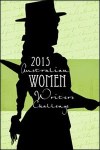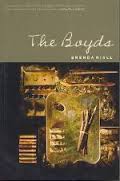2002, 387p.
In this book we are in the hands of a master biographer. Not many biographers would have the courage to take on a whole family as a unit, but Brenda Niall does here. The sprawling, artistic Boyd family has representatives in nearly every branch of the arts (literature, painting, architecture, sculpture) and its family tree is studded with seemingly endless iterations of ‘Boyd’ and ‘a’Beckett’ in their names. Only an experienced biographer would even attempt such a complex group biography across five generations and nearly two centuries, and she handles it with consummate ease.
She owes much of her success to the very careful structuring that she has used to organize this unwieldy and voluminous information. She starts with four men: the emancipist-entrepreneur brewer John Mills; the wealthy pastoralist Robert Martin (of ‘Viewbank’ and ‘Banyule’ fame); William a’Beckett the Chief Justice of Victoria; and Captain Thomas Boyd, career militarist and settler. Even though the first section of the book is called ‘The Matriarch’ (referring to Emma Mills, later a’Beckett), Niall firmly embeds these four patriarchs as the founding fathers, so to speak, of the Boyd dynasty. She takes forty pages to do so in her opening chapter, and she returns to them as touchstones throughout the book. The tainted convict source of the money that Emma a Beckett (nee Mills) brought to the family was a secret, but it bestowed on its members the time and space to explore their artistic passions across multiple generations.
The second thematic device she uses is that of the house. Houses were important to the Boyds. Emma’s husband W. A. C. Beckett had the ‘a Beckett coat of arms emblazoned on two houses: the first was The Grange in Berwick (since demolished for a quarry), the second was the lost manor Penleigh House in Wiltshire, England (later sold out of the family). Above the front door of the Grange he placed a stained glass window with the motto “Immemor Sepulchri Struis Domo” (Forgetful of the Tomb, You Build Houses). Niall uses the house as an organizing device for her narrative, but it was one suggested through the family’s actions rather than the biographer’s imagination. It works well, both as a means of organizing such an unruly venture, but also in highlighting the paradox that the Boyd family, so embedded and synonymous within Australian cultural life, were also drawn ‘home’ to an earlier ancestral myth of gentry glory. There is a string of Boyd Houses: the light-filled Grange so beautifully captured in Emma Minnie Boyd’s paintings, the tatty, faded grand Penleigh in UK, Tralee in Sandringham, the architect’s home in Walsh St South Yarra; Open Country in Murrumbeena and Bundanong in Nowra NSW.
The focus is firmly on the Boyds, but it is just as much an exploration of Australian, and especially Melbourne, cultural life as well. There are connections with other artists and their colonies, architectural commissions for major cultural figures, and networks branching across Melbourne society. At the same time, there is that siren call of “overseas”. Women are certainly present, even if they sometimes subjugated their role as muse behind that of wife and mother.
This is a marvellously complex but disciplined biography. This is how a group biography is done!
 I have posted this review to the Australian Women Writers Challenge site.
I have posted this review to the Australian Women Writers Challenge site.


One of Melbourne’s most fascinating families. I can’t wait to read it. We have a Guy Boyd sculpted and decorated ashtray bought by my grandmother for reasons I don’t know. It is quite a nice piece, but cracked. A good restoration would cost what it is worth.
Pingback: Australian Women Writers Challenge 2015 wrap up | The Resident Judge of Port Phillip
Pingback: Day of My Delight, Martin Boyd | theaustralianlegend
Pingback: Essay: ‘Nine lives’ by Brenda Niall | The Resident Judge of Port Phillip
Pingback: ‘My Accidental Career’ by Brenda Niall | The Resident Judge of Port Phillip